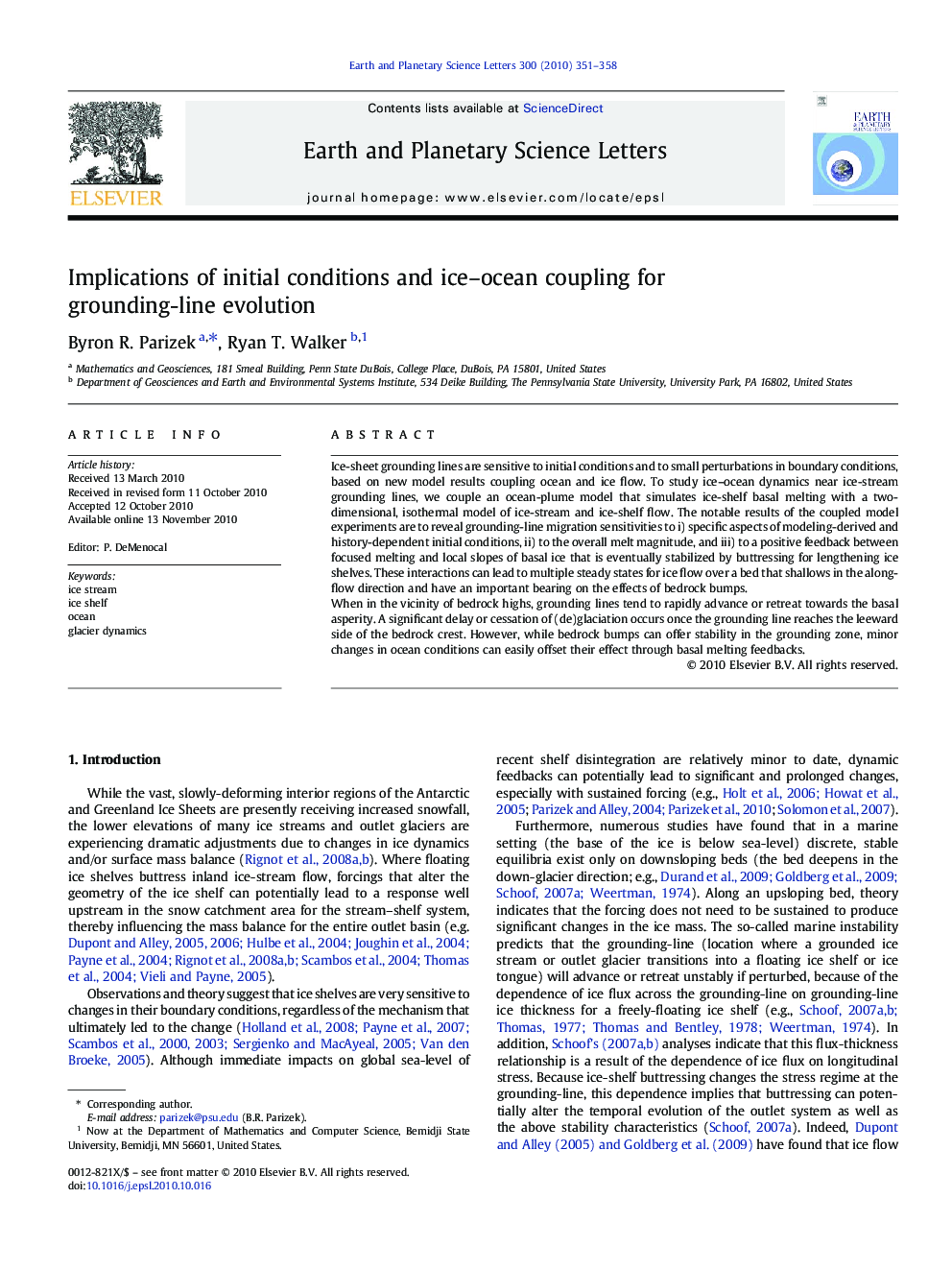| Article ID | Journal | Published Year | Pages | File Type |
|---|---|---|---|---|
| 4678164 | Earth and Planetary Science Letters | 2010 | 8 Pages |
Ice-sheet grounding lines are sensitive to initial conditions and to small perturbations in boundary conditions, based on new model results coupling ocean and ice flow. To study ice–ocean dynamics near ice-stream grounding lines, we couple an ocean-plume model that simulates ice-shelf basal melting with a two-dimensional, isothermal model of ice-stream and ice-shelf flow. The notable results of the coupled model experiments are to reveal grounding-line migration sensitivities to i) specific aspects of modeling-derived and history-dependent initial conditions, ii) to the overall melt magnitude, and iii) to a positive feedback between focused melting and local slopes of basal ice that is eventually stabilized by buttressing for lengthening ice shelves. These interactions can lead to multiple steady states for ice flow over a bed that shallows in the along-flow direction and have an important bearing on the effects of bedrock bumps.When in the vicinity of bedrock highs, grounding lines tend to rapidly advance or retreat towards the basal asperity. A significant delay or cessation of (de)glaciation occurs once the grounding line reaches the leeward side of the bedrock crest. However, while bedrock bumps can offer stability in the grounding zone, minor changes in ocean conditions can easily offset their effect through basal melting feedbacks.
Research Highlights► For a given climate, ice-stream grounding-line position is history dependent. ► Ice-ocean interactions can lead to multiple steady states on an upsloping bed. ► Grounding-line motion is enhanced by a positive feedback between the ocean and ice. ► Minor ocean-temperature perturbations can initiate ice stream advance/retreat. ► Advance/retreat is characterized by periods of stasis and jumps between basal highs.
